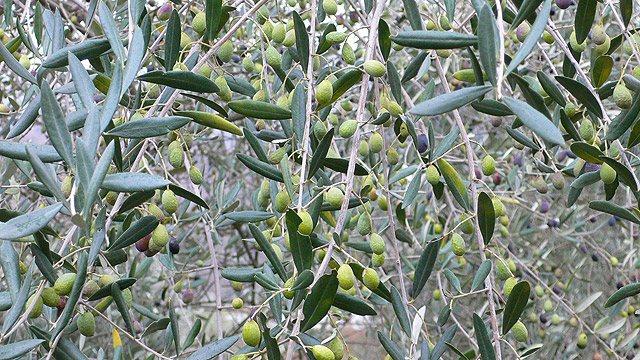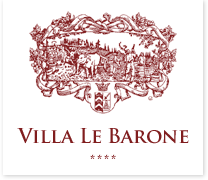
If you like Chianti and Tuscany, you ought to know something about olive trees and the olive oil before tasting it in Villa le Barone’s recipes
In the gardens of Villa le Barone, on the hills around it, north as far as Genoa, south as far as Sicily, as a matter of fact all around the Mediterranean sea a squat tree, seldom higher than ten meters, with silvery green leaves, is ever present: the olive tree. Once in a while one can see young olive tree plantations, but most often olive trees are scattered along the countryside and have often been there for hundreds of years.
Seldom has a tree been the object of so much symbology as the olive tree: Over the years, it has been the symbol of peace, wisdom, glory, fertility, power and purity. The leafy branches of the olive tree were ritually offered to representations of the Gods as a sign of benediction and purification and they were used to crown the victors, irrelevant on whether they were participating to a game or a war.
Olive oil has long been considered sacred. The olive branch was often a symbol of abundance, glory and peace. Today, olive oil is still used in many religious ceremonies. The ancient Greeks as well as the Romans used to smear olive oil on their bodies and hair as a matter of grooming and good health. And it is indeed why we offer to our guests olive oil soaps and bath foam.
Why such a rich simbology linked to the olive tree and not to the apricot, the plum, or the cherry tree? Just because olives and olive oil have been for centuries part of the staple foods of the Mediterranean and Tuscan diets. Even today, with some exceptions, olive oil can be found, in smaller or larger amounts, in most Tuscan dishes.
Normally, the olive tree is given some fertilizer in December and the soil around its trunk is cleaned from weeds and moved with a hoe. In march of the next year, trees are pruned at the top and branches sprouting inside the tree and not exposed to the light of the sun are removed. March is also the month when olive trees start flowering with tiny flower clusters appearing on previous year’s wood. Once fertilized by pollen, the olive will develop as a small drupe, 1 to 2.5 cm long, thinner-fleshed and smaller in wild plants than in orchard cultivars. Olives are then harvested in November when they are at the green to purple stage. Immediately after harvesting olives are cold pressed, and the water contained in the juice is centrifugated away from the emerald green liquid which is the “new” oliva oil (Olio Nuovo).

Every country has its own ways of collecting the olives …. and this makes for the quality and the price of the product: while in southern Itay and most of the southern mediterranean countries, olives are let to become extra ripe and dark and are then thrashed with long sticks to fall on the ground, in Tuscany and Liguria, olives are hand picked from the branches when they are still greenish with wooden/plastic combs that avoid bruising them. This sort of harvesting is work intensive and expensive and doing it before the olive is totally ripe yields a lesser quantity, but this care during the harvest makes for an incomparably higher quality and elegant fragrance and taste.
Is there “an” olive tree? There are hundreds of cultivars, each with their own characteristics of productivity and resistance to season’s whims (too cold, too hot, too rainy, too sunny, … ) and you will find in the same field different types: Morellino, leccino, frantoiano, moraiolo, pendolino, … to ensure a more or less constant production year after year.
Can I pick an olive and drop it on my preferred Martini cocktail? Well, you can… but you will not have the desired result! Martini olives are a different species of olives and are treated chemically to become soft and edible! …
Of course, you will get “Martini olives “ at Villa le Barone, but more important , you will taste in the dishes we prepare for you the Chianti olive oil, eco-labeled “agriqualità” , that we are producing on Villa le Barone ‘s property or in our farm,”Vecchienna”, also in Tuscany. A few drops on the “Ribollita” or to season your salad, it ‘s exquisite!
